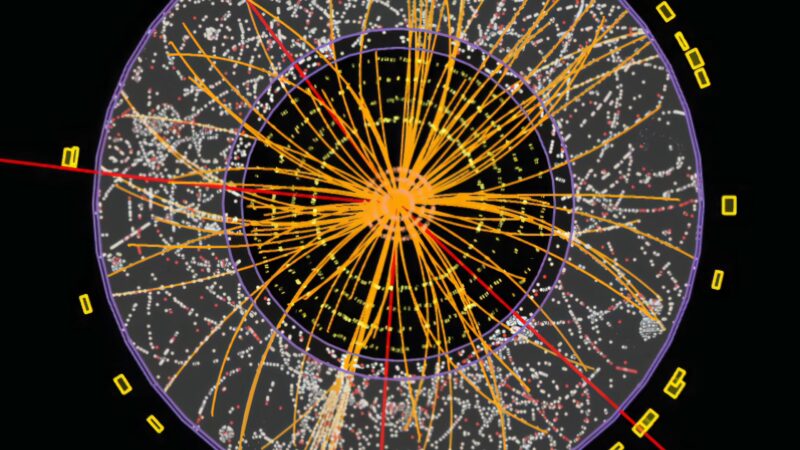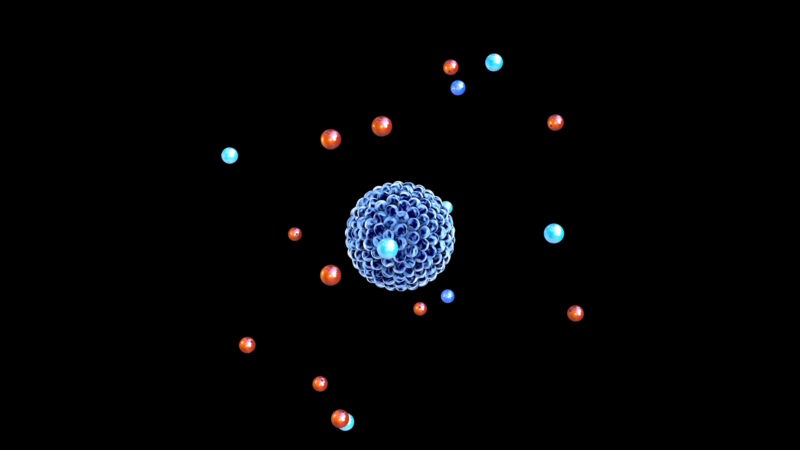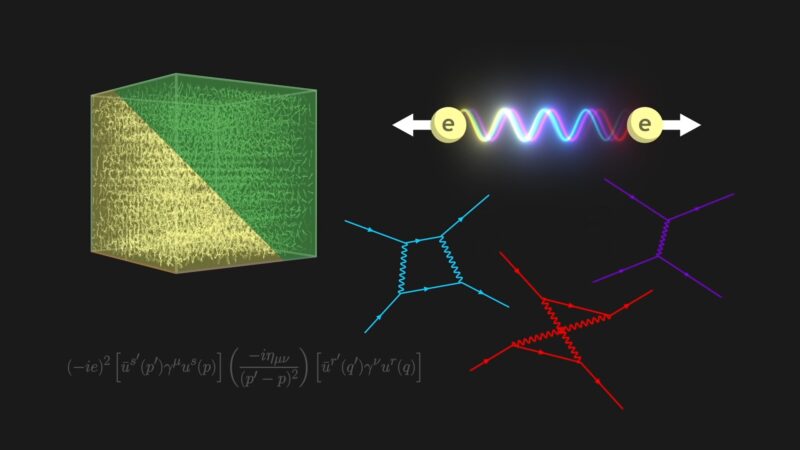In the realm of subatomic particles, the presence of electrical charge plays a fundamental role in defining the characteristics and interactions of these tiny constituents of matter.
Among these particles, there is one known for carrying a negative charge: the electron.
Today, we will discuss the electron’s nature, properties, and significance in the broader context of atomic structure and the physical universe.
In this article, you will learn about:
- Electron Fundamentals: Understand the basic properties of electrons, including their negative charge, mass, and role within the atom.
- Electrical and Magnetic Properties: Learn how electrons are integral to electricity, conductivity, and magnetism, influencing everything from everyday electrical devices to complex scientific equipment.
- Quantum Mechanics Insights: Gain insights into the quantum world, exploring concepts like wave-particle duality and the Heisenberg Uncertainty Principle as they relate to electron behavior.
- Chemical and Biological Roles: Discover the critical role of electrons in chemical reactions, bonding, and essential biological processes like photosynthesis.
- Technological Applications: Explore the wide-ranging applications of electron behavior in fields such as electronics, computing, medical imaging, and environmental technology.
The Electron: A Fundamental Particle
Discovery and Historical Context
The electron, discovered by J.J. Thomson in 1897, marked a pivotal moment in the understanding of atomic structure.
This discovery challenged the then-prevailing perception of atoms as indivisible units, revealing a more complex structure.
Thomson’s experiments with cathode rays led to the realization that these rays were streams of negatively charged particles, later named electrons.
Characteristics of the Electron

Electrons are subatomic particles with several key properties:
- Charge: Each electron carries a negative charge of approximately -1.6 x 10^-19 coulombs.
- Mass: Electrons have a very small mass, about 1/1836 that of a proton.
- Behavior: Electrons orbit the nucleus of an atom and can jump between energy levels, emitting or absorbing energy in the process.
- Influence on Atom Properties: The arrangement of electrons in an atom determines its chemical properties and reactivity.
Electrons in Atomic Orbitals

Electrons reside in atomic orbitals, specific regions around an atom’s nucleus where they are most likely to be found.
These orbitals are defined by quantum numbers that describe their energy levels, shapes, and orientations.
The distribution of electrons across these orbitals is crucial for figuring out chemical bonding and molecular structure.
Electrons and Electricity
Electrons are integral to the concept of electricity. Conductors, like metals, have loosely bound electrons that can move freely, facilitating the flow of electrical current.
In contrast, insulators have tightly bound electrons that do not move freely, preventing electrical conduction.
Electrons in Semiconductors
In semiconductors, the behavior of electrons is manipulated to control electrical conductivity.
Semiconductors are crucial in modern electronics, forming the basis of diodes, transistors, and integrated circuits.
Quantum Mechanics and Electron Behavior
Wave-Particle Duality
Quantum mechanics, a fundamental theory in physics, provides a comprehensive description of the behavior of electrons.
Electrons exhibit wave-particle duality, meaning they display properties of both waves and particles.
This duality is evident in phenomena like electron diffraction and interference patterns.
Uncertainty Principle and Electron Position
The Heisenberg Uncertainty Principle, a cornerstone of quantum mechanics, states that it is impossible to simultaneously know the exact position and momentum of an electron.
This principle highlights the probabilistic nature of electron behavior, a departure from classical physics.
Electrons in Chemical Reactions
Valence Electrons and Chemical Bonding
Electrons in the outermost shell of an atom, known as valence electrons, are crucial in chemical bonding.
The sharing or transfer of valence electrons between atoms forms the basis of covalent and ionic bonds, respectively.
Role in Redox Reactions
Electrons play a key role in redox (oxidation-reduction) reactions, fundamental processes in chemistry where electrons are transferred between molecules, atoms, or ions.
This transfer of electrons underpins a wide range of chemical reactions, from rusting to photosynthesis.
Applications and Technological Impacts
- Electronics and Computing: Electrons are at the heart of modern electronic devices. From the simplest circuits to complex computer systems, the manipulation of electron flow is key to the functioning of these technologies.
- Medical Imaging and Electron Microscopy: In medical imaging, techniques like electron microscopy utilize electrons to create high-resolution images of small structures. This technology has been pivotal in advancing fields such as biology, materials science, and nanotechnology.
The Electron’s Role in Magnetism
Fundamentals of Magnetism
Electrons are intrinsic to the phenomenon of magnetism.
The movement of electrons generates magnetic fields, and the alignment of electron spins in certain materials results in permanent magnets.
This principle is exploited in various applications, from the simple compass to complex magnetic resonance imaging (MRI) machines.
Electron Spin and Magnetic Properties
The concept of electron spin, a fundamental quantum property, contributes significantly to a material’s magnetic characteristics.
In ferromagnetic materials, like iron, the alignment of electron spins results in strong magnetic properties.
Knowing about electron spin has also led to advancements in quantum computing and spintronics, where the spin state of electrons is used to store and process information.
The Electron in Astrophysics

Electrons in Cosmic Phenomena
Electrons play a significant role in astrophysical phenomena.
The interaction of cosmic rays, which are high-energy particles from space, with the Earth’s atmosphere involves the movement and collision of electrons.
Electrons are also a key component in plasma, the fourth state of matter, prevalent in stars, including our Sun.
Spectroscopy and Stellar Composition
Spectroscopy, the study of the interaction of electromagnetic radiation with matter, relies heavily on the behavior of electrons.
By analyzing the spectra emitted or absorbed by stars, astrophysicists can determine their composition and properties.
This analysis is possible because electrons in different elements absorb and emit light at specific wavelengths.
Theoretical and Experimental Advances
Quantum Electrodynamics

The field of quantum electrodynamics (QED) represents a significant theoretical framework for understanding electron interactions.
QED, which combines quantum mechanics and the theory of relativity, accurately describes how electrons interact with photons, the particles of light.
Experimental Frontiers
Experimentally, high-energy particle accelerators have been instrumental in probing deeper into the behavior of electrons.
These facilities have allowed scientists to observe phenomena like electron-positron annihilation and the creation of new particles, further enriching our understanding of fundamental physics.
FAQs
Can electrons exist independently outside of an atom?
Yes, electrons can exist independently of atoms. Free electrons are found in various states, such as in plasma, as conduction electrons in metals, or as beam particles in particle accelerators.
How do electrons affect an atom’s overall charge?
Electrons determine an atom’s charge through their number relative to protons.
An atom is neutral if it has equal numbers of protons and electrons.
More electrons than protons give a negative charge, and fewer electrons result in a positive charge.
Are all electrons identical?
Yes, all electrons are identical in terms of mass, charge, and other intrinsic properties.
They are indistinguishable from one another, a fundamental principle in quantum physics.
Can the motion of electrons be directly observed?
Direct observation of electron motion is extremely challenging due to their small size and fast speeds.
However, the effects of their motion, like electrical current or magnetic fields, are observable, and indirect methods like electron microscopy can infer their behavior.
Why do electrons not fall into the nucleus despite the attractive force?
Electrons do not crash into the nucleus due to quantum mechanics.
They exist in quantized energy levels and are governed by probability, not fixed orbits, preventing them from spiraling into the nucleus under normal conditions.
How do electrons impact the color of materials?
Electrons influence color through their interactions with light.
When electrons absorb specific wavelengths of light and then re-emit them, the color we perceive is based on the wavelengths of light that are not absorbed but reflected or transmitted.
Final Words
Electrons, with their unique properties and fundamental role in numerous physical and chemical processes, are crucial to our knowledge about the universe.
From the microscopic world of atoms to the vastness of astrophysical phenomena, the behavior of this negatively charged particle influences a myriad of aspects of science and technology.
The continued study of electrons promises to yield further insights into the mysteries of the universe and pave the way for future technological advancements.

